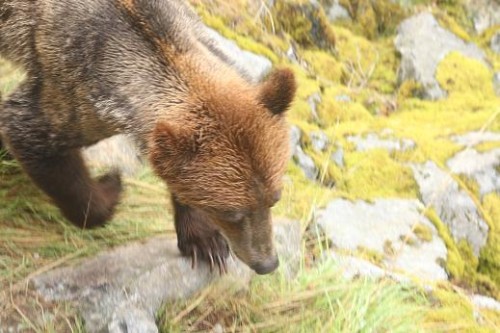This black bear mother was spotted on the way to our day’s whale watching tour. It is a good area to find black bears especially if there is a low tide in the morning. This nursing mother (look closely at the photo) was on the beach alone that means she must have left her cub sleeping in the bush the above high water mark. We know she has one cub because we had seen them in this area on the previous day.
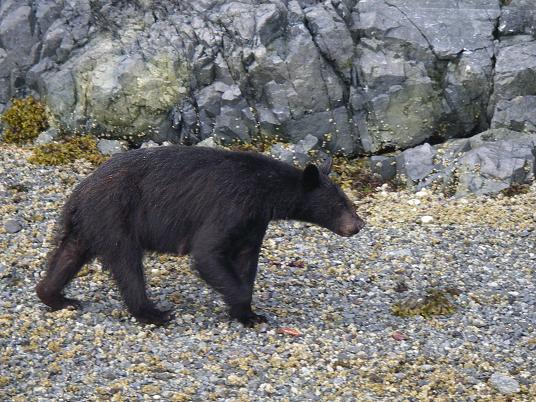
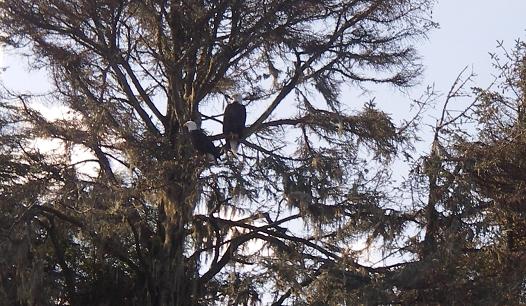
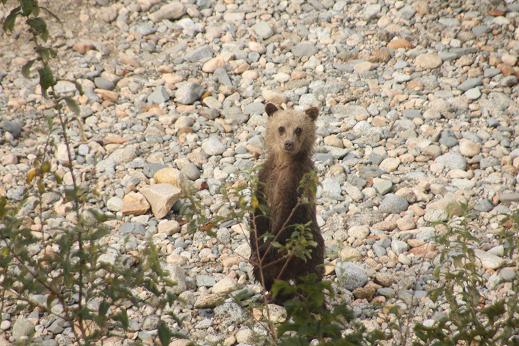

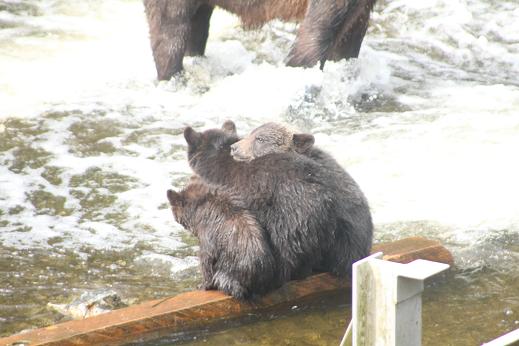
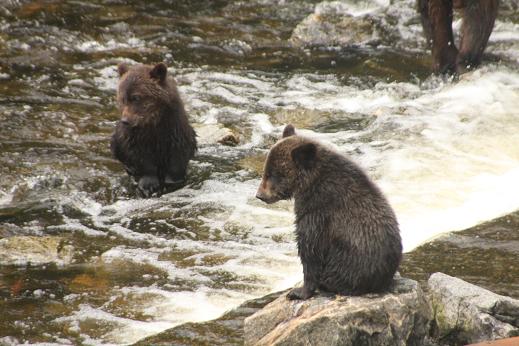

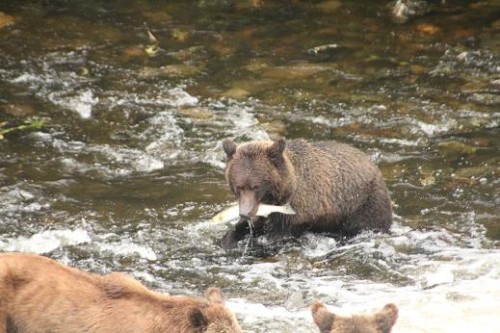
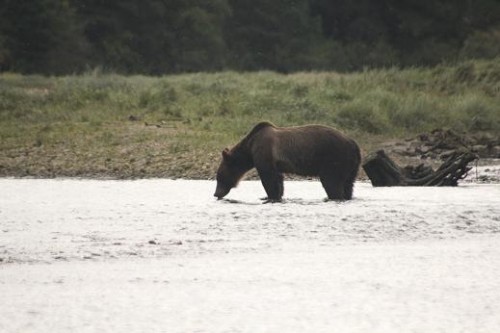 On Grizzly Bear Lodge’s wildlife tours during the hot days of July and August we frequently see grizzly bears in the water. The water in Knight Inlet’s Glendale estuary is a mixture of salt and fresh water which the grizzly bears often drink when the tide is going out. On a rising tide the surface water contains more salt so less drinking. It is better to have the grizzlies wading and swimming and cooling off in the water than moving into the shade away from our viewing.
On Grizzly Bear Lodge’s wildlife tours during the hot days of July and August we frequently see grizzly bears in the water. The water in Knight Inlet’s Glendale estuary is a mixture of salt and fresh water which the grizzly bears often drink when the tide is going out. On a rising tide the surface water contains more salt so less drinking. It is better to have the grizzlies wading and swimming and cooling off in the water than moving into the shade away from our viewing.